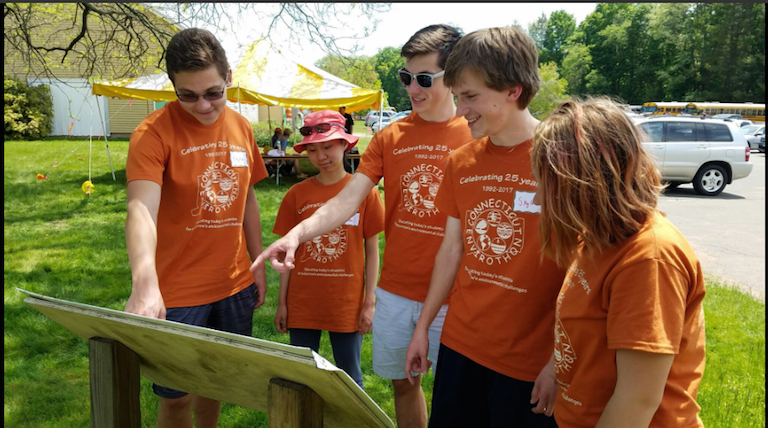Students compete, help environment
Helping Out – Senior Clayton Koonz, Pearl Liu, Thomas Messier, Skyler Szot and Junior Julia Furmanek come together to participate in Envirothon competition.
May 20, 2017
On May 18, students attended the 2017 Envirothon Competition at the Tolland Agricultural Center in Vernon, Connecticut. This event consisted of four tests on different topics: forestry, soils, aquatics and wildlife, as well as a presentation. The students placed first in soils as well as fifth overall out of a total of 35 schools.
To prepare, each student on the team took on one of the tasks to work on for their presentation. These students were junior Julia Furmanek as well as seniors Pearl Liu, Clayton Koonz, Thomas Messier and Skyler Szot.
“Four members of the team are in AP Environmental Science, so during class after the AP exam we worked on our final presentation,” Liu said.
During the school year, there was one Envirothon workshop for each of the topics. Each team member attended at least one of the workshops which consisted of lectures and activities relevant to Envirothon which were led by various scientists.
“At the forestry workshop, we learned about the history of forests in Connecticut, and there were stations for identifying tree species by leaves, bark and fruit. At the soils workshop, the other workshop I attended, we learned about the properties of soil, different soil textures and various tools used to test soil quality,” Liu said.
On competition day, the team took part in each of the four tests and one presentation. For the presentation, the students chose a location in Farmington and proposed a permaculture project for it and explained how it would incorporate permaculture principles.
“The presentation is on permaculture, which once we found out, we then decided to select a rock on the hill in front of the school as our site. Dr. [Laura] Butterfield, our advisor, brought us to some of the workshops, and she gave us advice to prepare for Envirothon as well as ideas for the permaculture plan,” Szot said.
In the presentation, students explained their assessment of the current site they tested, including a description of the soil, existing plants, slope and any unique features. If the presentation was not between nine to ten minutes long, then points were deducted. Students were required to share the presentation and answer questions from the judges equally.
Butterfield helped to prepare the students for the day.
“All of the students were/are in my AP Bio or AP Enviro classes. We cover a lot of the material in class, but they did have to do some self-study and design the scenario for the current issue in order to make a poster and do an oral presentation,” Butterfield said.


